Salt flats are among the most surreal and stunning landscapes on Earth. These vast, flat expanses of salt can create mind-bending illusions, especially after rainfall when the surface turns into a giant mirror reflecting the sky. These natural wonders offer optical tricks that blur the line between land and sky, creating a magical experience for visitors. Let’s explore some of the most unique salt flats around the world and discover the mesmerizing illusions they create.
Salar de Uyuni, Bolivia
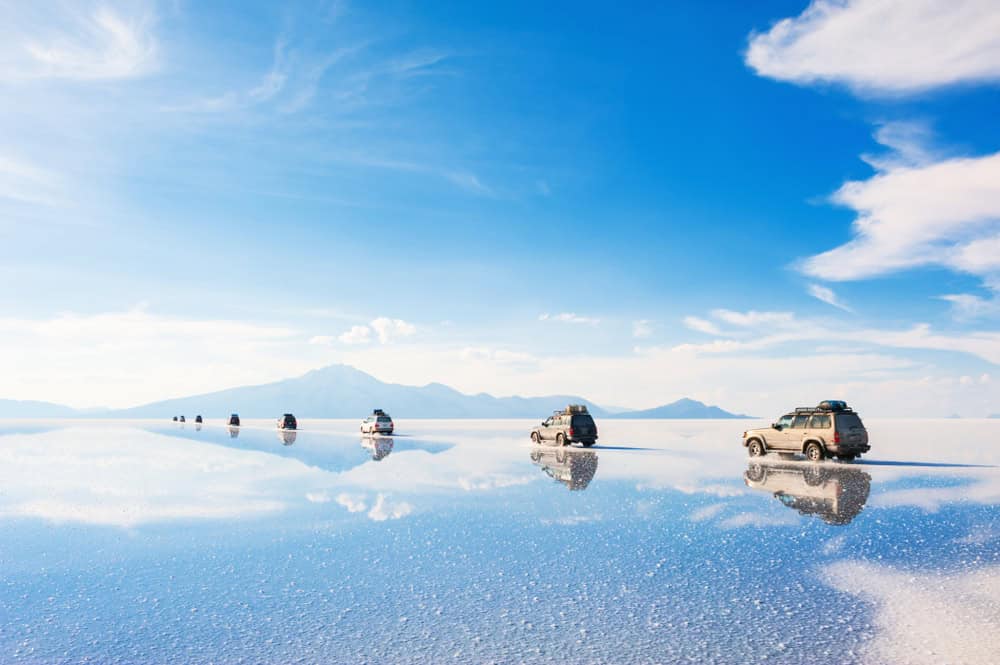
The world’s largest salt flat, Salar de Uyuni, covers over 10,000 square kilometers of the Bolivian Altiplano. After rainfall, the flat transforms into a massive mirror, reflecting the sky in a perfect, surreal illusion. This unique optical effect blurs the boundaries between the ground and the sky, making it seem as though you’re walking on the clouds. Its seemingly endless horizon also allows photographers to play with forced perspectives, making objects appear larger or smaller than they are in real life. It also plays a crucial role in lithium extraction, holding the largest reserve in the world. During the dry season, the flat’s hexagonal salt formations are equally mesmerizing, creating a geometric marvel that stretches as far as the eye can see. Nearby attractions like the Train Cemetery and salt hotels add to the uniqueness of this area. This site is also ideal for stargazing, with the flat, reflective surface amplifying the beauty of the night sky.
Bonneville Salt Flats, USA
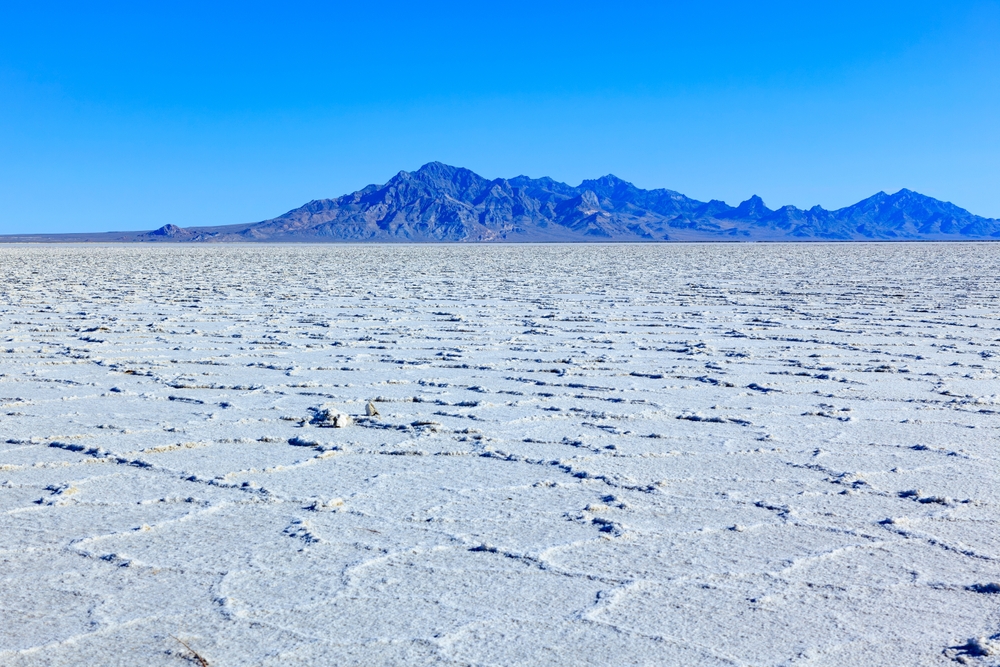
Located in Utah, the Bonneville Salt Flats span over 30,000 acres and offer a flat, white landscape that seems otherworldly. Known for its role in land-speed record attempts, this vast expanse also creates stunning optical illusions, especially during the hot summer months. The surface can appear as though it’s covered in water, an effect caused by the intense heat. This creates mirage-like reflections that mirror the sky and distant mountains, offering a mind-bending experience for visitors. The flat, uniform terrain also makes it a prime location for forced perspective photography, allowing people to manipulate scale and create illusions of massive objects. In winter, the reflective surface of the salt flat creates a vast, mirror-like expanse that adds to the ethereal beauty of the area. Additionally, it’s a prime spot for stargazing due to the minimal light pollution, making the night sky incredibly vivid.
Etosha Pan, Namibia
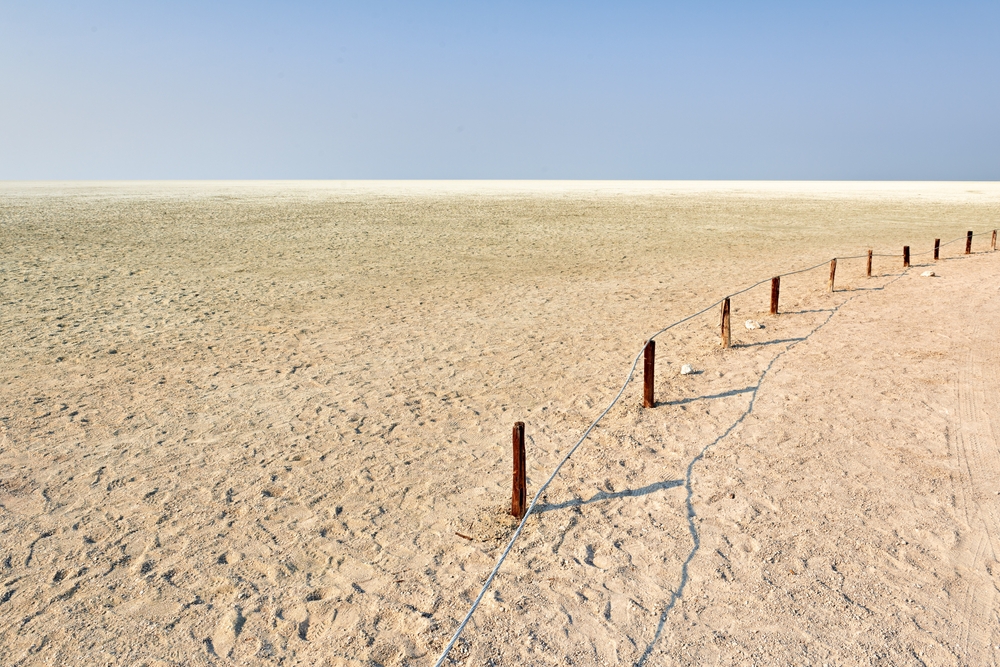
Located in Namibia’s Etosha National Park, the Etosha Pan is an enormous salt flat that plays tricks with the mind through its shimmering, mirage-like reflections. During the wet season, the pan fills with water, turning into a mirror that reflects the surrounding landscape and wildlife. Flamingos, elephants, and other animals can be seen walking across what looks like a vast, glassy lake. The reflective quality of the pan is most striking during sunrise and sunset when the sky seems to merge with the ground. The rest of the year, the flat transforms into a cracked, dry expanse of white earth, offering a stark, desert-like scene. The changing seasonal effects of the pan make it a fascinating place to witness nature’s optical illusions. Additionally, the area is a critical habitat for several endangered species, including black rhinoceros and cheetahs.
Chott el Djerid, Tunisia
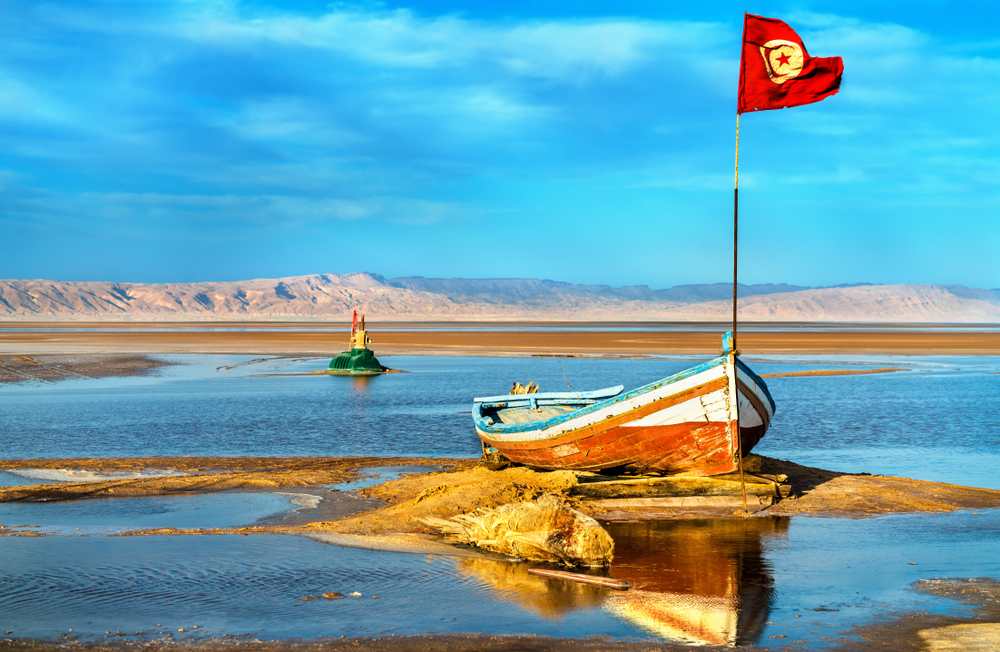
Chott el Djerid, situated in southern Tunisia, is the largest salt pan in the Sahara Desert. Known for its ability to create mesmerizing mirages, the flat often appears to have pools of water just ahead, an optical illusion caused by the intense desert heat. The effect makes it look as though the horizon is floating, creating an eerie and dream-like scene. The shimmering salt crystals change colors, from white to pink or even green, depending on the minerals in the water. During sunrise and sunset, the pan glows in golden hues, adding to the surreal atmosphere. Parts of the original “Star Wars” trilogy were filmed here, adding to its mystique as a place where reality and fantasy merge. In winter, after rainfall, the pan becomes a mirror, reflecting the surrounding mountains and sky, enhancing its otherworldly allure.
Salar de Atacama, Chile
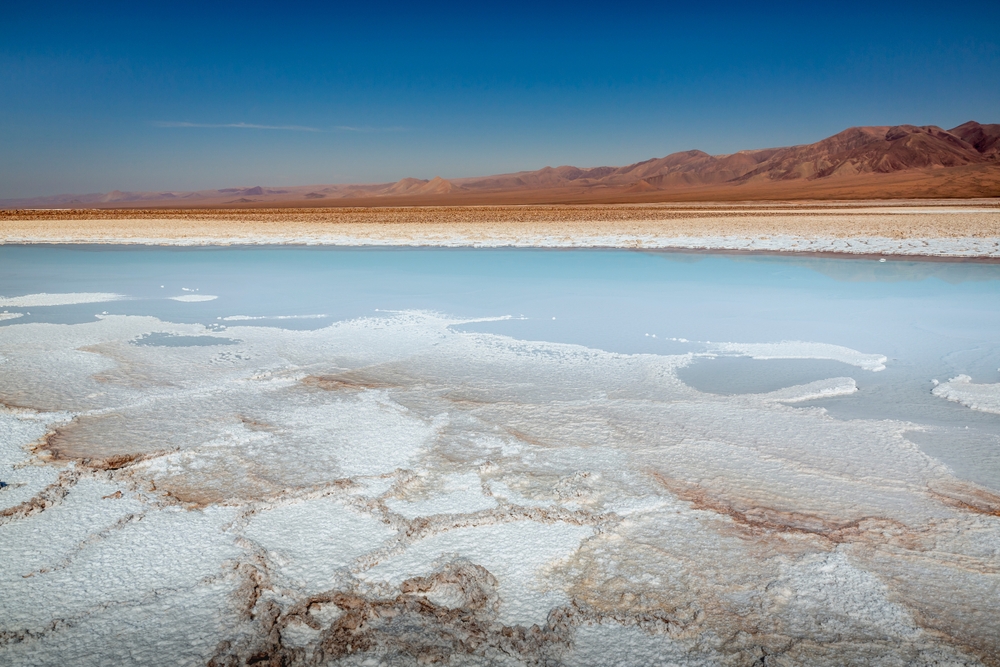
Salar de Atacama is the largest salt flat in Chile, located in the Atacama Desert, one of the driest places on Earth. This vast, arid plain creates a sense of boundlessness, with shimmering heat waves that often produce mirage effects. During the rainy season, shallow pools of water form on the salt flat, turning it into a reflective mirror that creates stunning photographic opportunities. The flat is also home to unique wildlife, such as Andean flamingos, which add a vibrant touch of color against the white salt. The nearby Andes Mountains provide a dramatic backdrop, enhancing the surreal quality of the landscape. Visitors can also explore the nearby geysers and hot springs, further emphasizing the otherworldly nature of this region. The salt’s rich mineral deposits have also made it a hub for lithium extraction.
Devil’s Golf Course, USA
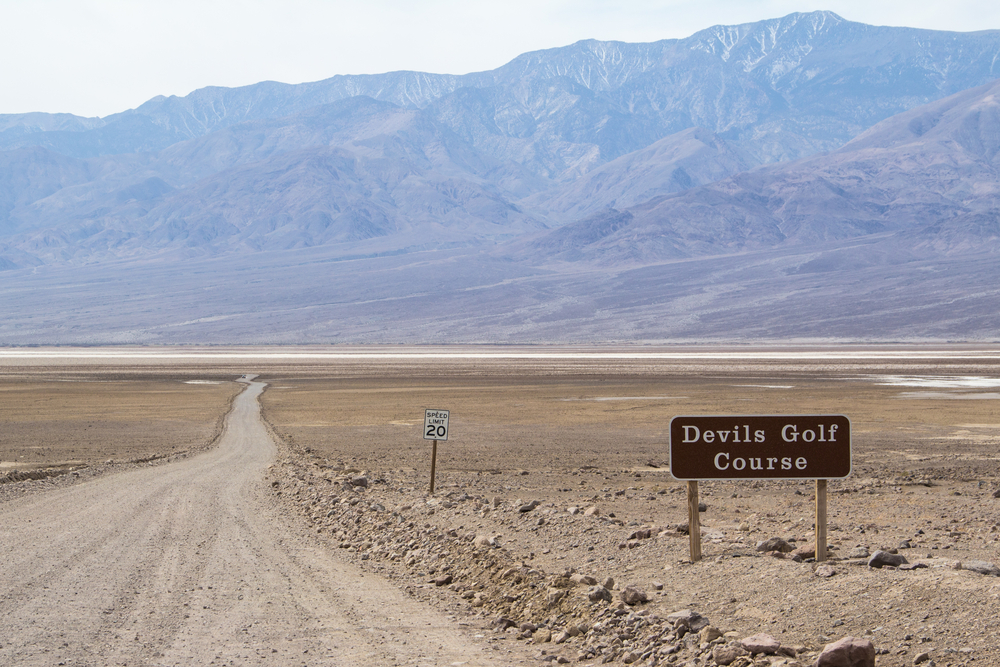
Devil’s Golf Course is a rough, jagged salt flat located in California’s Death Valley National Park. Its name comes from the jagged salt formations that cover the ground, which are so sharp that “only the devil could play golf” on it. Unlike the smooth expanses of other salt flats, this one is made up of large salt pinnacles that have been sculpted by the wind and rain over centuries. The uneven surface creates strange shadows and optical illusions, making the ground appear both flat and rugged at the same time. The area is also known for the eerie sounds created by the expansion and contraction of the salt crystals, which makes the landscape feel even more otherworldly. Despite its harsh conditions, the site attracts photographers and adventurers seeking to experience its surreal beauty. It is one of the most unique salt flats in the world, as it defies the smooth, reflective norm of similar landscapes.
Danakil Depression Salt Flats, Ethiopia
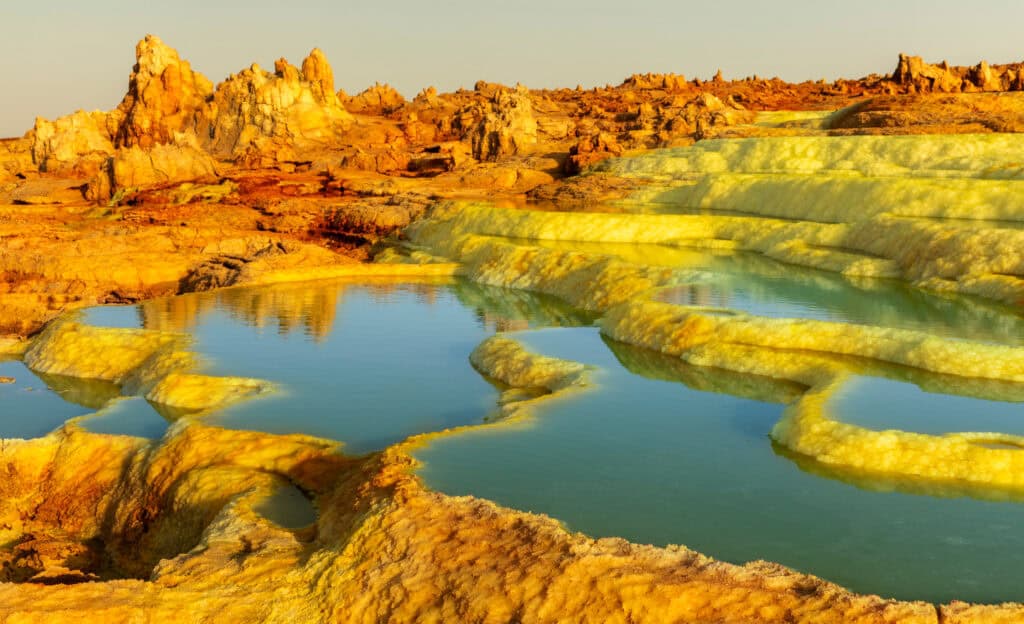
The salt flats of the Danakil Depression in Ethiopia are part of one of the hottest and lowest places on Earth, where temperatures can exceed 50°C. The salt formations here, created by evaporating ancient lakes, form a vast, shimmering landscape that distorts vision with its heat-induced mirages. The surface, which changes colors from white to yellow and green due to sulfur and other minerals, creates an illusion of a painted, alien world. The nearby active volcanoes and sulfur springs further enhance the area’s otherworldly feel, as they release steam and gas, creating an even more surreal atmosphere. The combination of heat, minerals, and volcanic activity makes this one of the most visually striking and harsh environments on Earth. Despite the extreme conditions, the area is inhabited by the Afar people, who have long mined the salt.
Lake Gairdner, Australia
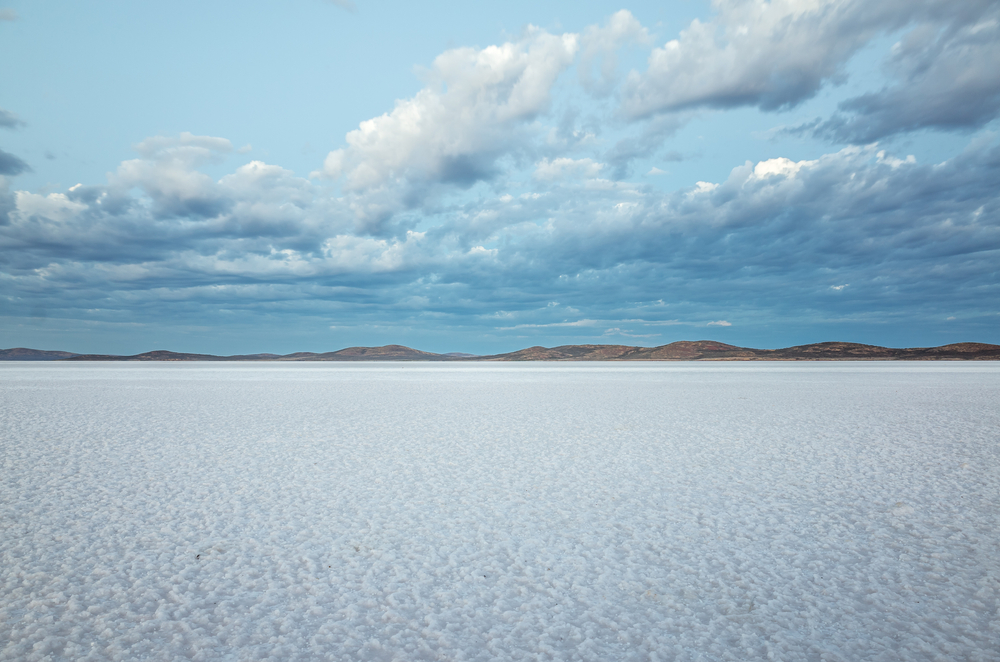
Lake Gairdner, a vast salt flat in South Australia, offers a shimmering white expanse that creates mesmerizing illusions, especially during the midday sun. The flat, hard surface seems to stretch infinitely, with heat waves causing mirages that make the horizon appear to float. After rainfall, the salt lake temporarily fills with water, transforming into a giant mirror that reflects the sky, mountains, and even passing clouds. The lake’s unique setting has also made it a popular location for land-speed record attempts, adding a touch of thrill to its beauty. The salt’s fine texture, along with its strikingly white surface, makes it a dream for photographers looking to capture otherworldly landscapes. Surrounded by red desert hills, the contrast between the salt flat and the dry land creates an even more dramatic visual effect.
Salinas Grandes, Argentina
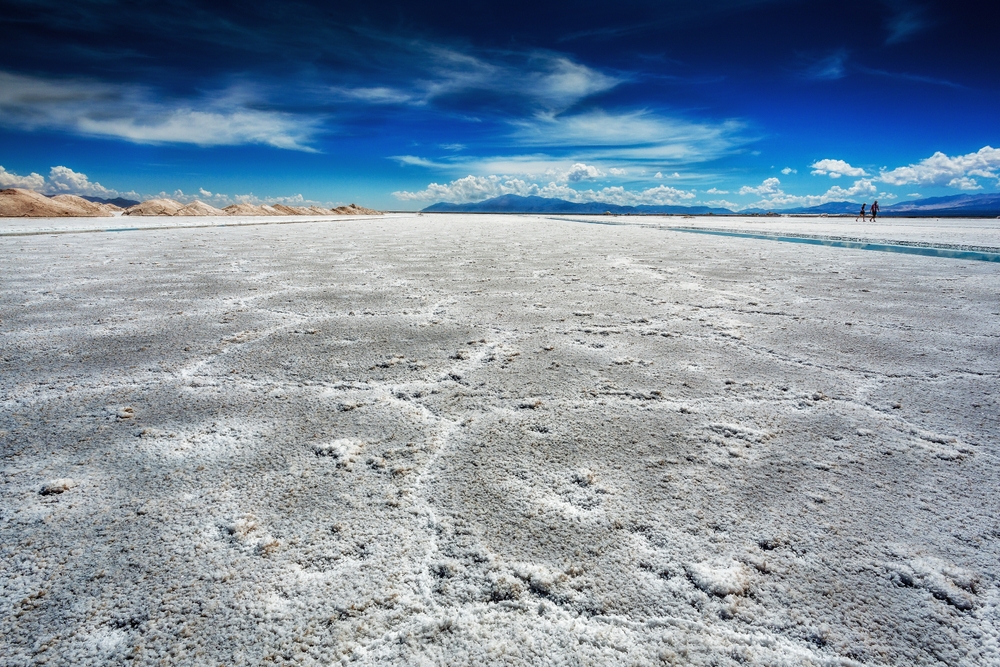
Salinas Grandes is a vast salt flat located in northern Argentina, covering over 8,200 square kilometers. Its immense, flat surface creates dazzling optical illusions, especially when sunlight reflects off the salt crystals, making it look like a snow-covered desert. After rainfall, the salt flat forms a shallow layer of water, turning the ground into a perfect mirror that reflects the sky and clouds in stunning detail. This mirror effect creates the illusion of an endless sky and often confuses visitors with its surreal blending of land and atmosphere. The reflective properties make this location a photographer’s dream, particularly at sunrise and sunset when the colors of the sky seem to merge with the land. In addition to its natural beauty, it is a major source of lithium, contributing to the region’s economy.
Badwater Basin, USA
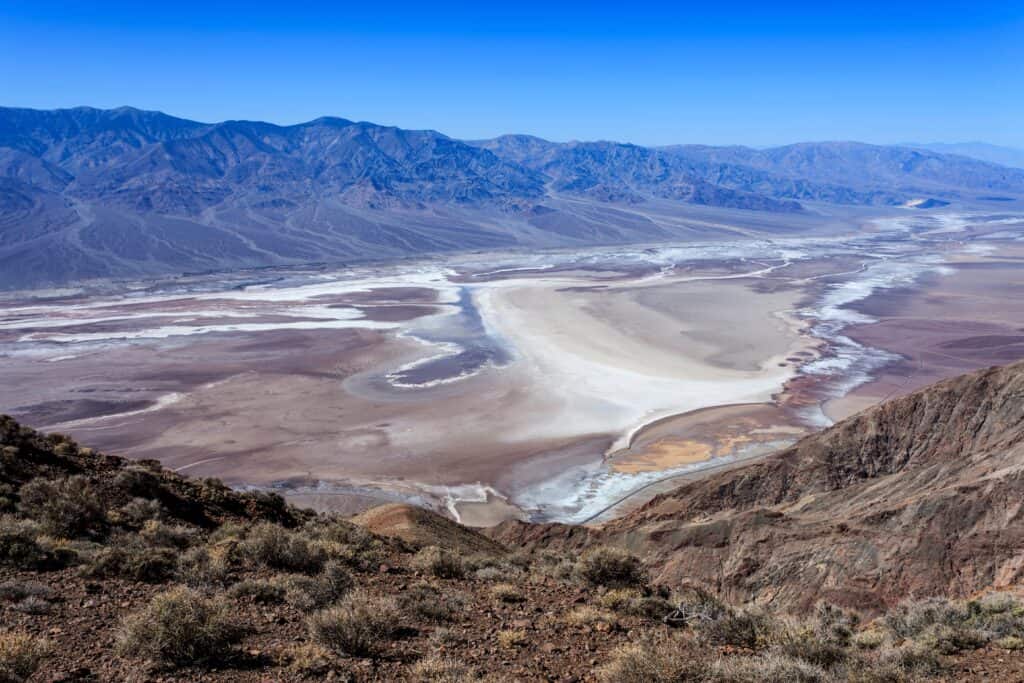
Badwater Basin, located in California’s Death Valley, is the lowest point in North America at 282 feet below sea level. Its salt flats stretch for miles, creating a blindingly white landscape that seems to extend forever. The cracked, polygonal patterns of the salt formations create a mesmerizing texture across the ground, and during hot weather, heat waves distort the horizon, making it appear as though the ground is floating. This optical illusion adds to the surreal feel of the area, making it one of the most striking salt flats in the world. When occasional rainfall occurs, shallow pools of water form, briefly turning the basin into a reflective mirror. The extreme conditions, with scorching heat and a dry, barren landscape, make it both inhospitable and awe-inspiring. Despite its harsh environment, the basin draws visitors for its unique beauty and the strange visual effects it produces.
Lake Eyre, Australia
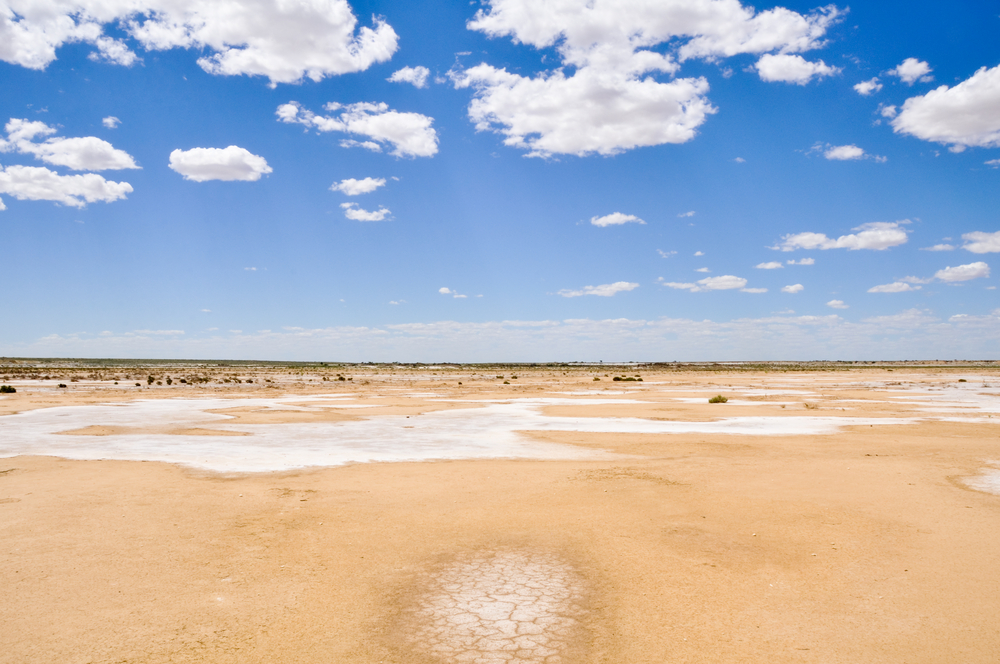
Lake Eyre, the largest salt lake in Australia, lies in the country’s vast outback and spans over 9,500 square kilometers when full. Most of the year, the lake is dry, leaving behind a flat, shimmering salt crust that stretches out in every direction. The intense heat causes mirages, making the horizon appear as though it is floating or rippling, creating a surreal and otherworldly scene. During the rare periods of heavy rainfall, the lake fills with water, transforming it into a massive mirror that reflects the sky and surrounding landscape. It becomes a hub for birdlife, with pelicans, gulls, and other species flocking to the area.
Makgadikgadi Salt Pans, Botswana
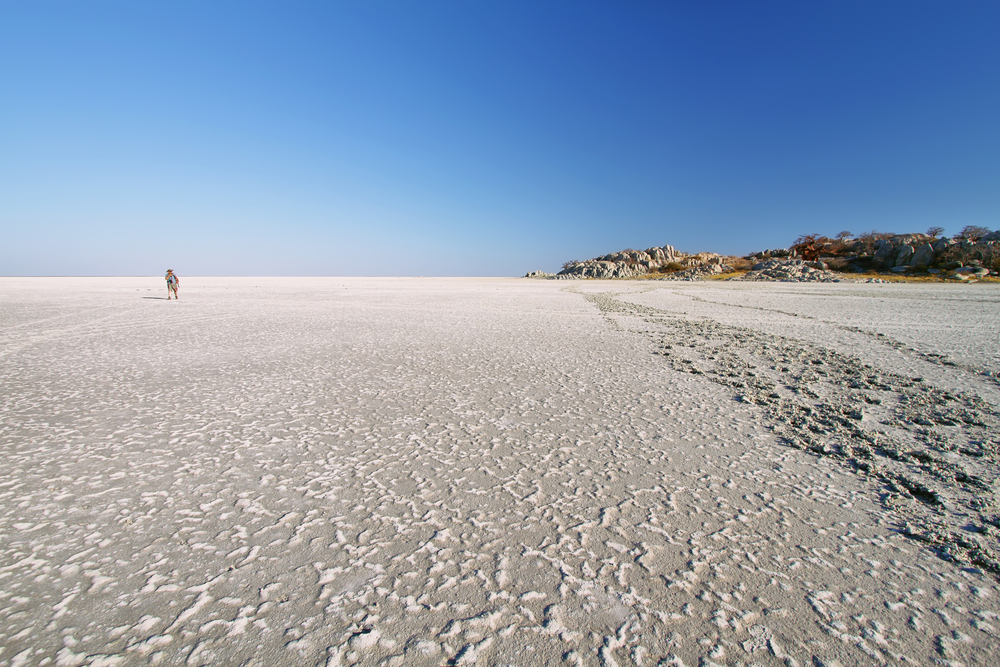
Makgadikgadi Salt Pans in Botswana are among the largest salt flats in the world, covering an area of around 12,000 square kilometers. During the dry season, the pans appear as a flat, white expanse that stretches endlessly, with heat waves creating mirages that seem to make the horizon disappear. This optical illusion gives the feeling of walking through an endless, featureless desert. However, during the rainy season, the pans fill with water, creating shallow lakes that reflect the sky and clouds, turning the area into a mirror-like surface. These are also home to migrating wildlife, including zebras and flamingos, adding to the spectacle when the water is present. Visitors can camp nearby and witness the incredible transformation from a dry desert to a reflective wonderland.
Tuz Gölü, Turkey
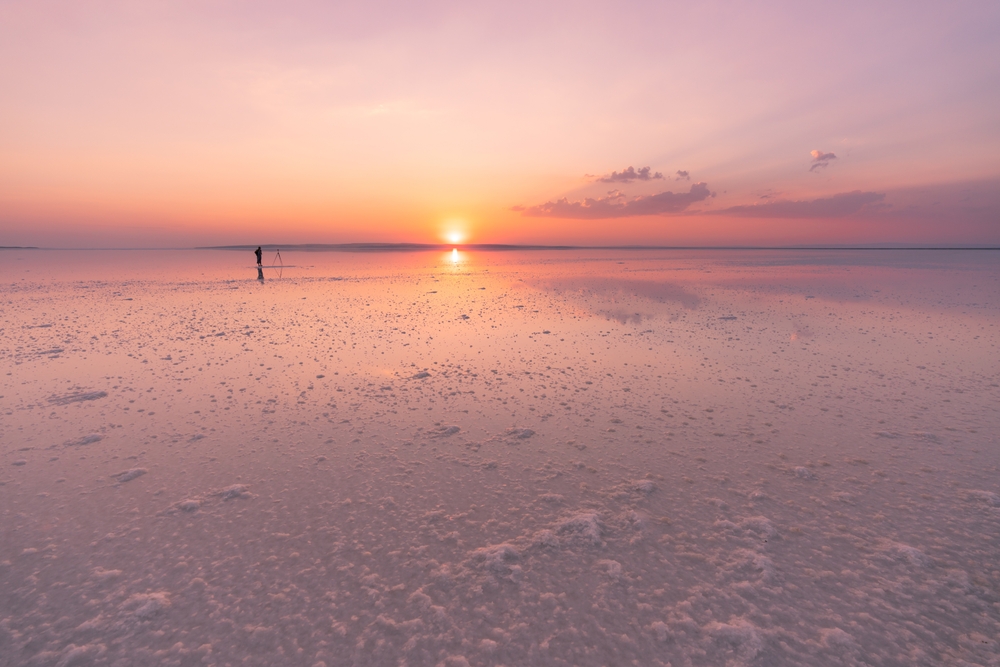
Tuz Gölü, also known as Salt Lake, is the second-largest lake in Turkey and one of the largest salt lakes in the world. Located in central Turkey, the lake becomes particularly striking during the summer when much of the water evaporates, leaving behind a thick layer of salt that creates a brilliant white landscape. The salt crust reflects the sunlight, making it appear as though the ground is glowing. After rainfall, the remaining water turns the flat into a giant mirror, creating the illusion that the sky and ground are one. The mirroring effect is especially captivating at sunrise and sunset, when the colors of the sky seem to blend seamlessly into the salt flat. In addition to its natural beauty, it is an important site for salt production and attracts visitors with its unusual landscape and optical illusions.
Hutt Lagoon, Australia
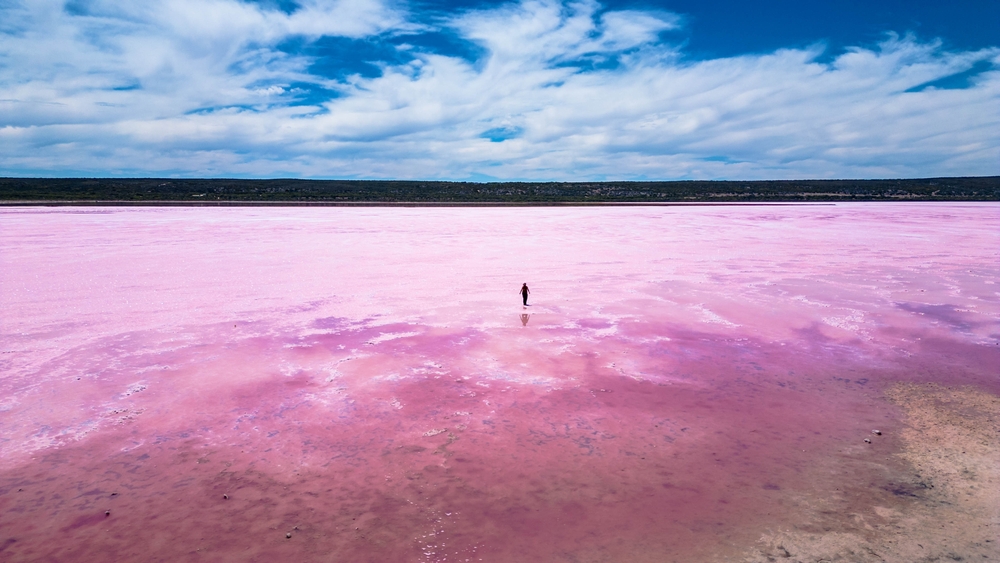
Hutt Lagoon in Western Australia is not your typical salt flat—it’s a pink lake that produces stunning optical illusions due to its vibrant hue. The bright pink color comes from the presence of algae that produce beta-carotene, and the lake’s shallow waters enhance the reflective quality of the salt crust. The pink hue intensifies when the water levels are low, creating a surreal landscape that appears to glow, especially during sunset. When combined with the blue sky and white clouds, the reflection creates a dreamlike scene that seems almost otherworldly. The lagoon is particularly popular among photographers who aim to capture the stunning contrast of colors and the mirror-like quality of the water. It is also used for the production of beta-carotene, contributing to both its economic and ecological significance.
Laguna Brava, Argentina
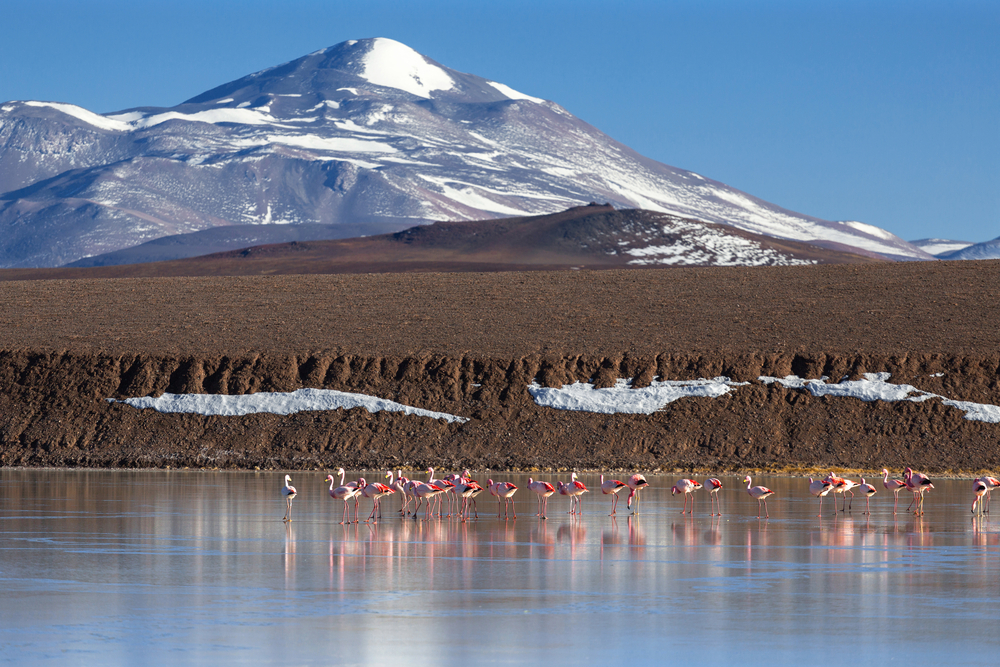
Laguna Brava, located high in the Argentine Andes, is a striking salt flat surrounded by towering mountains. The lagoon, which is often covered in a thin layer of water, creates a mirror-like reflection that doubles the beauty of the landscape. The surrounding mountains, often snow-capped, reflect perfectly on the surface, making it seem as though there are two worlds—one above and one below. The flat, calm surface of the salt flat amplifies the illusion, especially during sunrise and sunset when the colors of the sky are mirrored on the ground. Its remote location and high altitude add to the feeling of isolation and vastness, making it a peaceful yet surreal place to visit. The area is also home to flamingos, which add a touch of vibrant color to the otherwise stark, white landscape.
This article originally appeared on Rarest.org.
More from Rarest.org
19 Endangered Flowers That May Disappear Forever
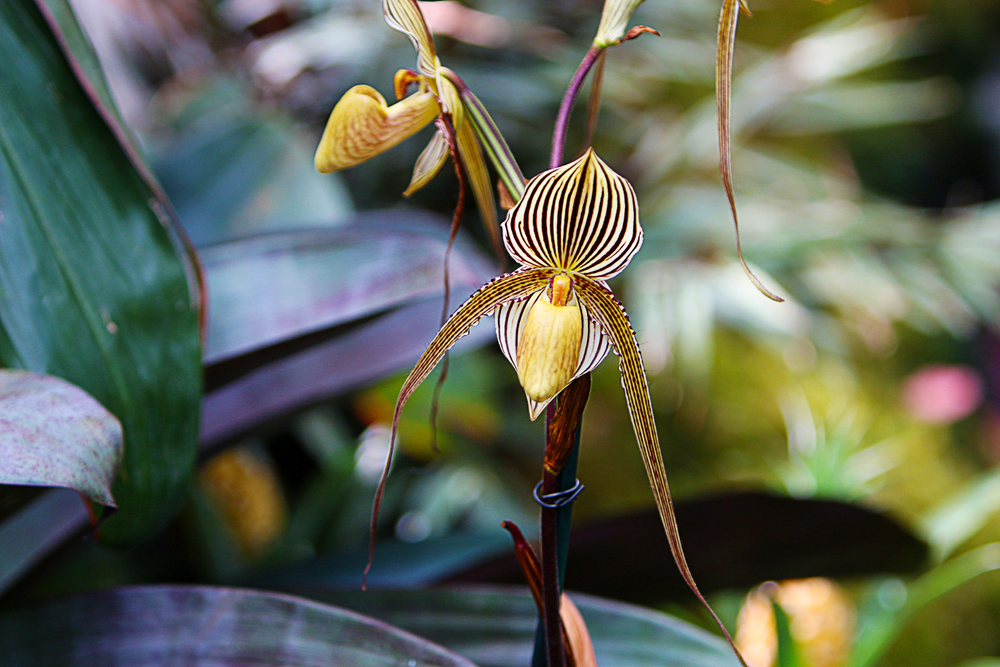
Many stunning flowers around the world are on the verge of disappearing forever. These endangered blooms face threats like habitat destruction, climate change, and human activities. Read More.
24 Rare Reptiles Native to Isolated Islands and Habitats
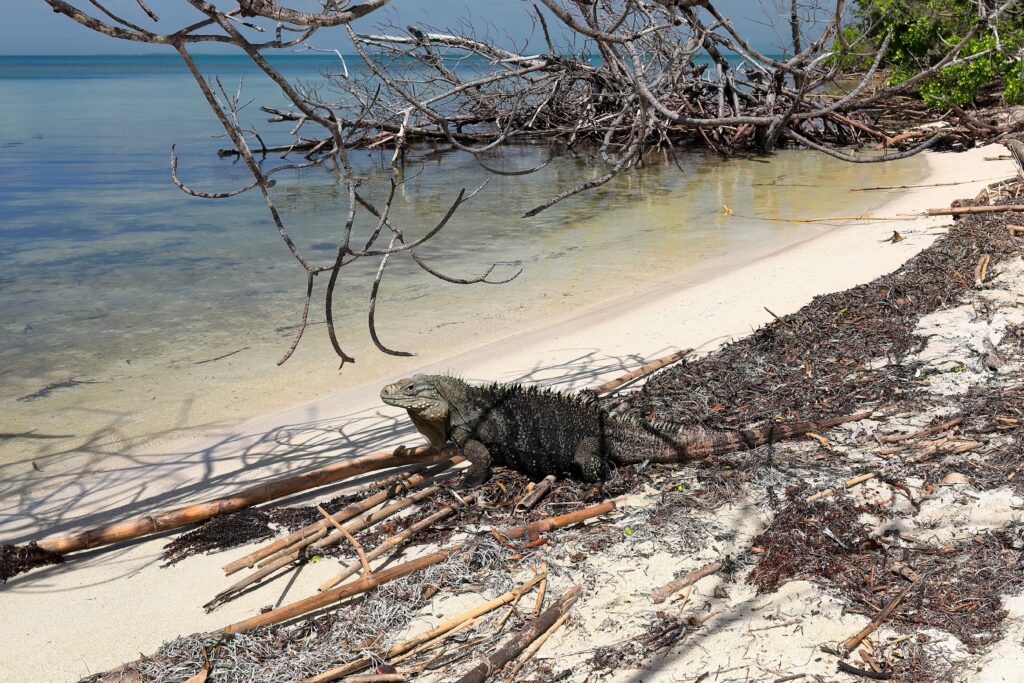
Isolated islands and remote habitats are home to some of the world’s most unique reptiles. These rare creatures have adapted to their surroundings in fascinating ways, often developing features found nowhere else. Read More.
The 13 Most Mythical Currencies in History
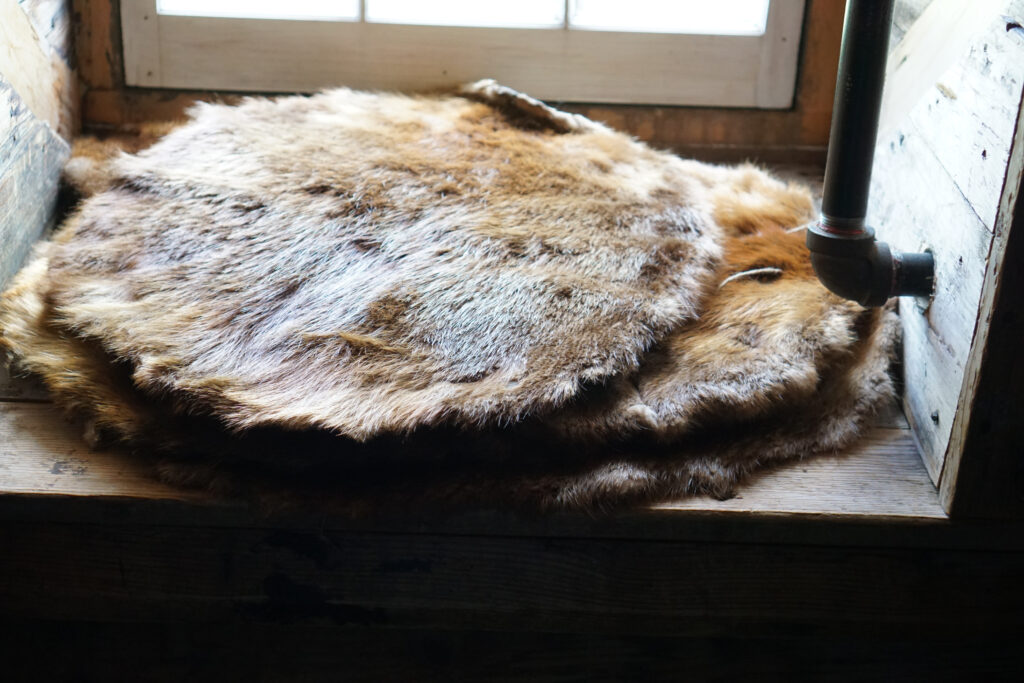
Throughout history, different civilizations have used a wide variety of materials and objects as currency, often reflecting their unique cultures and resources. From stones and shells to cocoa beans and metal tools, these currencies went beyond their practical value, symbolizing wealth, power, and status. Read More.
